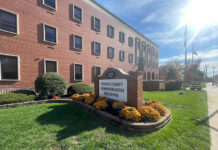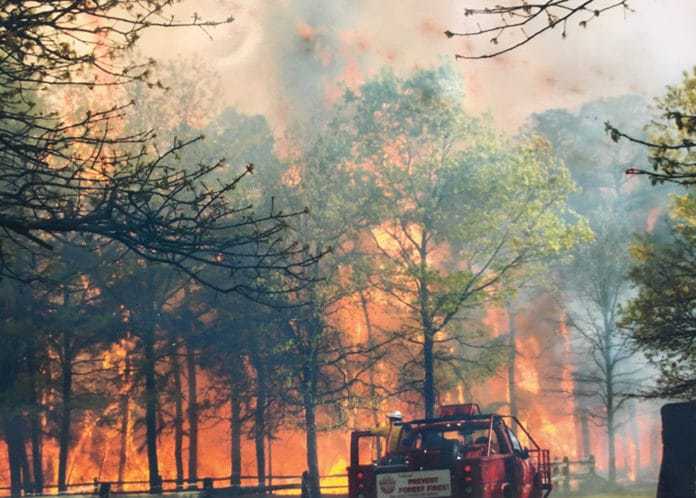
BARNEGAT – May 15 marked the 10th anniversary of the wildfire that consumed 19 square miles of Pinelands, burned down five homes, damaged 13 others, and prompted the evacuation of 2,500 homes in the townships of Barnegat, Stafford, Bass River, Eagleswood and Little Egg Harbor.
Has anything changed in 10 years? If there were a wildfire today, are residents safer now?

The answer is yes, said officials who held a special Wildfire Safety Council meeting in Barnegat Township on May 11 for the anniversary of the Warren Grove Wildfire, named for a gunnery range in the Pinelands that is operated by the 177th Fighter Wing of the NJ Air National Guard.
An F-16 military jet on a training mission from the 177th Airborne Fighter Wing Unit, located at Atlantic City International Airport, caused the fire by dropping a flare from an altitude that was too low.
Representatives from the Fighter Wing Unit attended the meeting and explained how the fire resulted in changes to their training.
“We were responsible for the fire. I know the pilots, and it was an awful experience,” said Major Tom Still. “I offer sincere apologies from the Guard.”
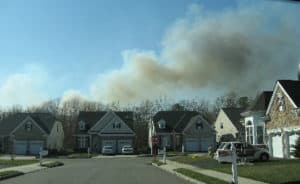
The National Guard was informed that there was a high risk of fire that day, he said, but the range control officer did not convey that message to the pilots. When the flare was dropped too low at about 500 feet, it didn’t burn out in time and started the wildfire.
Major Still, who is a pilot for the NJ National Guard, said the range was shut down for a year and a half afterwards, and new leadership was put into place to make sure it didn’t happen again.
“We don’t drop flares, there are no pyrotechnics, and every user who flies on the range takes a test explaining the rules,” he said. Pilots also have to take a fire test, Major Still added.
The Guard has instituted a fire response plan, and in the event of a fire they would get involved more quickly, he said.

“We appreciate your incorporating us today. It was a hard lesson learned on our end,” he said.
Master Sergeant Michael Mimler said a lot of what was done to reopen the range has become a national standard.
“We communicate with local fire services. We have fire check-ins, and a lot of other ranges are doing the same thing,” he said. “A lot of great things have come out of this for communities across the country.”
Barnegat Committeeman Alfonso Cirulli, who was mayor during the 2007 wildfire, said if the flare hadn’t caused the fire, a cigarette would have.
“The residents of Barnegat fully support the National Guard, they stepped right in and helped and made reparations,” he said to audience applause.
A panel of elected officials, Barnegat Police Office of Emergency Management, NJ Forest Fire Service and representatives from some of the senior communities shared what Committeeman Frank Caputo called “a wealth of knowledge” that had been gained from the fire, that consumed 17,270 acres of pinelands.

Barnegat Police Lieutenant and Emergency Management Coordinator Jeff Ryan recalled the 2007 fire when he was in the Brighton section of the township and said he couldn’t see five feet in front of him.
“We were going door-to-door to evacuate people, and we were getting into verbal arguments from residents who did not want to leave,” he said. “When we say it’s time to go, it’s time to go.”
There was no communication at the time between neighboring towns, Lt. Ryan said. Barnegat police told residents to evacuate north on the Parkway, while State Police were telling northbound motorists to exit into Barnegat.
Lt. Ryan said that now a traffic plan for evacuation is “100 percent feasible” even with the 6,000 to 7,000 more Barnegat residents today than there were 10 years ago.
The evacuation plan calls for an officer at every intersection, shoulders becoming an extra lane and altering lane directions if needed, he said.
“Plans are great, but they’re never perfect. Conditions can change at the drop of a hat, like a wind shift,” he said.
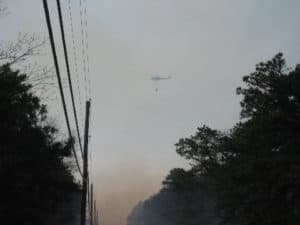
“The key to evacuation is the residents have to listen. If they know there is an evacuation coming, leave early and beat the traffic,” he said.
State of NJ Forest Fire Warden Scott Knauer said that there doesn’t have to be a drought for Pineland fires, which burn very aggressively, partly because sand doesn’t hold water.
“Everyone was on alert that it was dry and the potential was there. We attacked the fire with everything we had,” Knauer said, but with the wind blowing from west to east with gusts of 30mph, it continued to burn aggressively.
“Some days you eat the bear, and some days the bear eats you…well, the bear ate us,” Knauer said of the 2007 wildfire.
In 2017, there have been already been 500 wildfires in the state and 1,200 acres burned, he added.
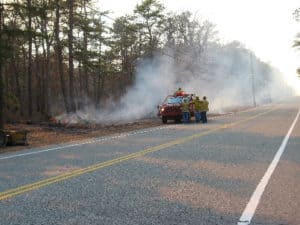
“We learned from the incident. Maybe we need to evacuate earlier. It takes a lot of time to evacuate people and we are making those notifications as early as possible,” Knauer said.
Barnegat was the first township to become a Firewise Community, a program that encourages homeowners to take individual responsibility for preparing their homes from the risk of wildfire, said member of the NJ Forest Fire Service John Cowie. Now there are 14 in the state with 11 almost ready to come on board.
Two of the of the adult communities in Barnegat, Horizons and Mirage, have become Firewise Communities, and Pheasant Run and Brighton are taking the steps to become one by making their developments more fire resistant.
Some of the steps include mowing a 100-foot wide swath of underbrush around the perimeter of the community, thinning out the treeline, and installing fire-resistant plants.
Barnegat was one of the first communities in the county to use the Ready, Set, Go – which didn’t exist in 2007 – another program that teaches community members to become involved with safeguarding their property against wildfire, he said.
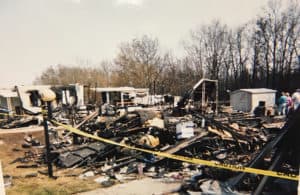
Trevor Raynor of the NJ Forest Fire Service said they do a lot of prescribed burning in the winter months, and strategically burn about 1,000 acres each year around the range to create fire breaks.
“Pine needles are like tinder, so we burn the detritus off so that if fire runs into it will steer the fire or stop it and prevent it from spreading,” he said.
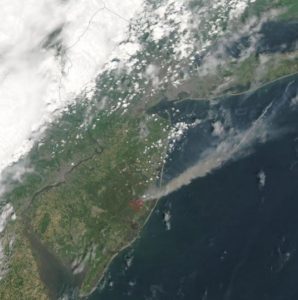
In fact, at a recent meeting of the Ocean County Mayor’s Association, Department of Environmental Protection Commissioner Bob Martin said that the best way to fight forest fires is to create controlled burns. By clearing out underbrush and doing some pre-season burning, the DEP can help prevent the widespread fires.
President of the NJ Fire Safety Council Bill Brash said that Barnegat was the first Fire Adapted Community (FAC) township in New Jersey that is set up to exchange information with neighboring towns, collaborate and help communities live safely with fire by taking action before, during and after wildfires.
“The purpose of this council is to educate people about wildfires in our area,” said Committeeman Caputo. “It’s inevitable they will happen again.”


